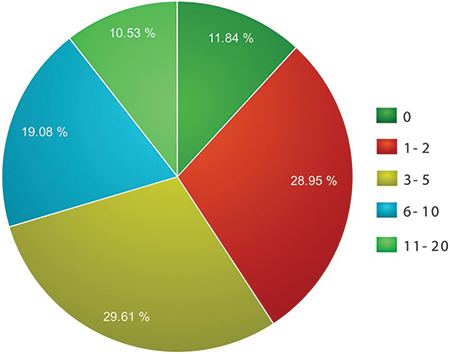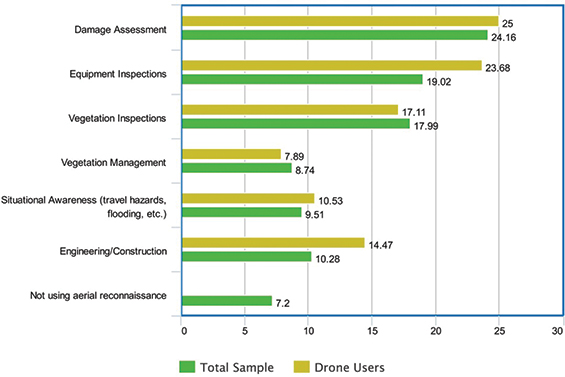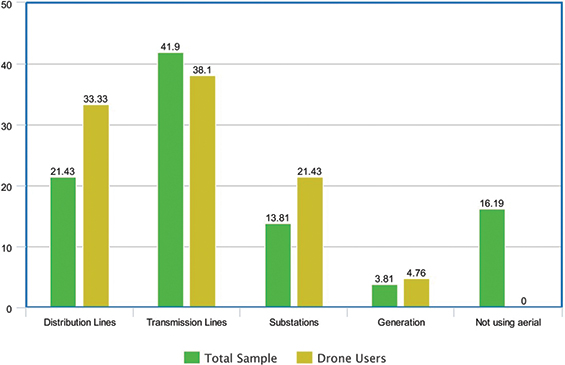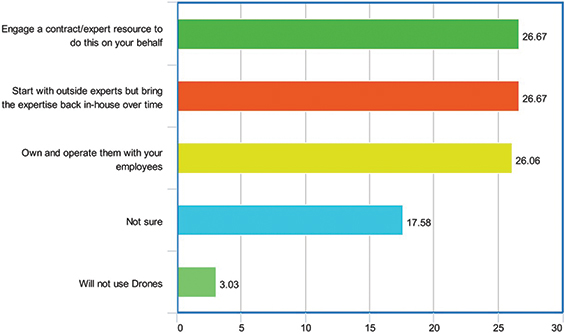Thinking specifically of emergency response operations, where do drones fit in – both now and in the future?
These are the questions that utility companies are asking…and need answers to as soon as possible.
Since 2005, Macrosoft has been working with electric utilities across the country to effectively manage resources – people and equipment – for dealing with emergency power outages.
When a major outage occurs, many utility companies use the Macrosoft’s innovative tools, Resources on Demand (RoD) and Assessments on Demand (AoD), to determine the scope of the incident, assess the damage, and manage both internal and external resources to restore power.
But, in today’s world, where technology is advancing faster than any time in history, there is no such thing as resting on previous successes. The company is constantly monitoring new tools, technologies and trends in emergency response.
And one of the most important, potentially beneficial advances in recent years has been the use of aerial drones for emergency response management.
- What do we know about drones?
- What, if anything, can they do better than current aerial reconnaissance resources?
- What can they not do as well, or at all?
- Are they safe, reliable, and/or cost-effective?
To find out the answers, we conducted a research study among key personnel from utility companies around the country.
Specifically, in August, we conducted online research among utility company personnel, representing a broad spectrum of organizations across the United States (about 80% of the sample) and a number of other countries as well, which included investor-owned facilities (about half the companies surveyed), municipals, and cooperatives.
They responded to a series of questions – both closed-ended (i.e. with defined choices) and open-ended (free-form) – covering a wide range of topic areas about emergency response management, including a comprehensive series on drones.
Here is what they told us:
Frequency of Opening Emergency Operations Storm Centers
About 12 percent of respondents were at utility companies fortunate enough not to have opened their Emergency Operations Storm Centers at all last year.
Of the rest, about equal percents (roughly 30% each) opened 1 to 2 times in the past year, 3 to 5 times and 6 or more times – with 10 percent opening 11 to 20 times.

Aerial Reconnaissance
A large majority of utility companies in this study (about 80%) use one or more forms of aerial reconnaissance for emergency operations – mostly helicopters.
They serve a wide range of uses – the most frequent being equipment inspections, vegetation inspections and vegetation management.
By contrast, only about one in ten companies currently use drones.
It is hard to determine whether this is due to the relative newness of drones as an emergency operations tool (i.e. it’s just a matter of time), because the perceived problems with drones – which will be discussed further on – are felt to outweigh their benefits, or because they are considered unnecessary, as helicopters can perform the same functions:

This suggests that emergency utility companies are not fully cognizant of the advantages of drones, and/or have not yet put them to their greatest advantage.
When asked what specific areas aerial reconnaissance is best used for, transmission lines are most frequently mentioned, followed by distribution lines and substations:

How Drones Are Currently Used
Among those whose companies do have drones, several explain how they are used:
“In general, helicopters (are) used for annual transmission OH line and vegetation inspections, semi-annual infra-red thermography of OH lines, and post-disturbance damage inspections… We also use drones for high definition inspections of OH Transmission line structures on lines with significant contributions to SAIDI (inspections conducted inside of the wire zone).”
“(We) use copters mainly but have used drones for remote areas across large bodies of water for damage.”
“Drones are in the infant stage but we now have approval and own license from the FAA and are currently testing and utilizing the drones. We are also looking into all benefits of this technology and testing to see the effectiveness of their usage in various departments and aspects of the electrical utility.”
Future Use of Drones
Despite the benefits drones afford, and the fact that they are a relatively new technology, only about half of all respondents believe drones will become part of their company’s emergency response arsenal.
But, when asked about utility companies (not specifically their own) deploying drones in the future, over 95 percent say they will – and 89 percent expect them to be deployed within the next five years.
This indicates that, although utility professionals believe drone usage is inevitable in the near future, a good many have difficulty envisioning their own utility companies using them.
And what will drones be used for? Damage assessment is considered their single most effective use, with equipment inspections, vegetation inspections and situational awareness bunched relatively closely behind.
Surprisingly, security/surveillance, which drones are deployed for by other industries as well as non-industrial venues, lags a good deal behind.
Hindrances to Using Drones
When respondents are asked what factors would hinder their use of drones, FAA regulations predominate as a concern, followed by liability and technical concerns.
Importantly, the cost of drones is at the bottom of the ‘hindrance’ list, which tells us that, whatever else is thought of them, they are an economical option for air reconnaissance – certainly versus the currently-preferred helicopters.
How Drones Will Be Managed By Utility Companies
Earlier it was noted that drones are new to the utility industry and that this may contribute to the uncertainty shown by study participants about how they might be used by utility companies. This is further demonstrated by the following table:

As you can see, there is no clear direction regarding how utility companies might use drones – with roughly equal numbers of respondents envisioning their own companies either engaging an expert to work with drones, starting with experts but eventually going in-house or owning/operating drones using company employees.
The single most surprising finding of this table, however, is that just 3 percent say their companies “Will not use drones.”
Earlier in the study, we saw that only about 11 percent of all respondents said their companies currently use drones, and only about 48 percent said they would be using drones in the future. Yet here – just minutes later - only 3 percent feel their companies will not be using drones – i.e. 97 percent see them doing so.
This again brings home the overriding theme that drones are, at least as of now, a mystery to utility professionals – for both current and future usage.
Payloads
One thing respondents are not at all unsure about, however, is what payloads the drones would transport. Over 80 percent mention cameras – video, infrared, still, or LIDAR varieties.
Types of Drones That Will Be Used
As for the types of drones they foresee? Most expect they will be multi blade copters – with helicopter and fixed wing varieties well behind. But let’s remember, again, that:
- Respondents, as a group, are not very conversant with current drone technology and
- That technology is rapidly changing, so this might change in the near future.
Conclusions
Drones represent a major opportunity for emergency response operations. But, given the current state of the art, and the limited understanding of their potential by utility professionals, the jury is still out on their usage.
On the positive side, drones offer a combination of reach, speed, safety, and cost that cannot be duplicated by other systems.
On the negative side, however, their usage is heavily restricted by FAA regulations.
In addition, they have a number of significant risks, including:
- Liability (i.e. damage and personal injury)
- Safety (possibly interfering with aircraft, crashing into buildings, property, etc.)
- Privacy (what will the drones be able to see? Is this another area of legal liability?)
- Security
Many utility professionals see drones as an important new resource for emergency response management. But their lack of full understanding regarding how and why drones are used must be overcome as time goes on, for drones’ full potential to be realized.
About the Author
 John Kullmann is Vice President of Marketing and Sales at Macrosoft, a New Jersey Technology company. With more than twenty years’ experience, John is a recognized expert in business development efforts for professional services firms. He is responsible for expanding Macrosoft from its traditional roots as a leading software development and system implementation company into an equally accomplished provider of packaged technology products.
John Kullmann is Vice President of Marketing and Sales at Macrosoft, a New Jersey Technology company. With more than twenty years’ experience, John is a recognized expert in business development efforts for professional services firms. He is responsible for expanding Macrosoft from its traditional roots as a leading software development and system implementation company into an equally accomplished provider of packaged technology products.







